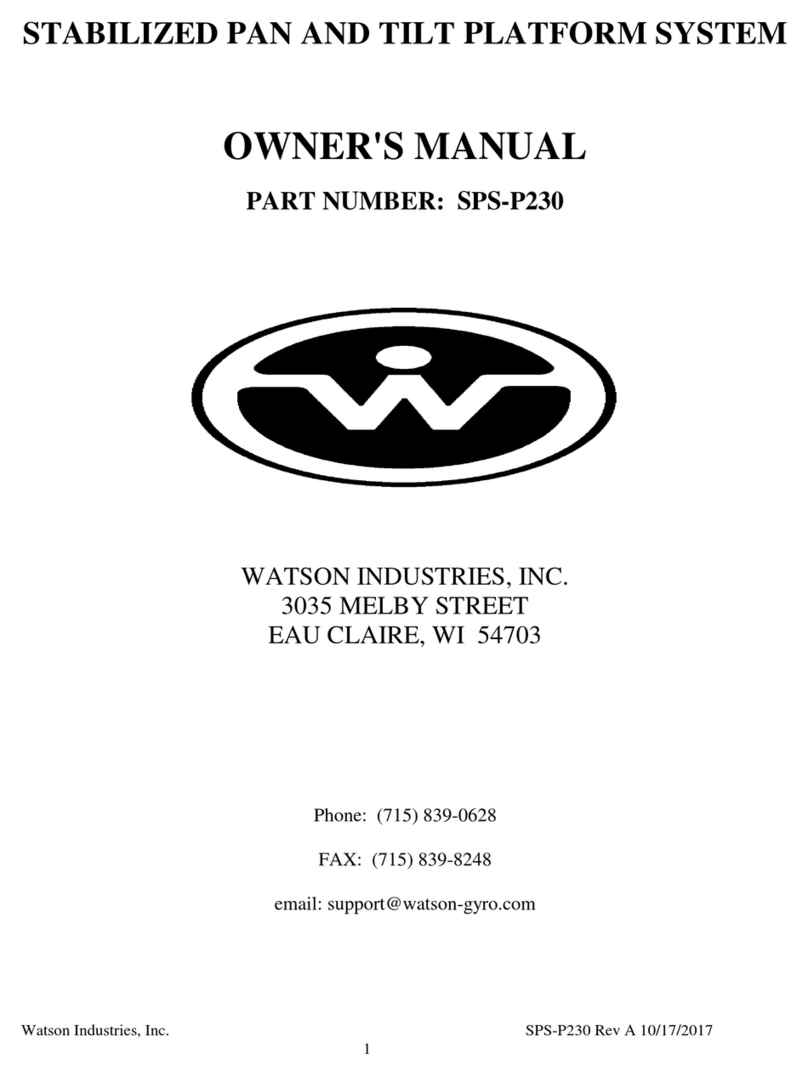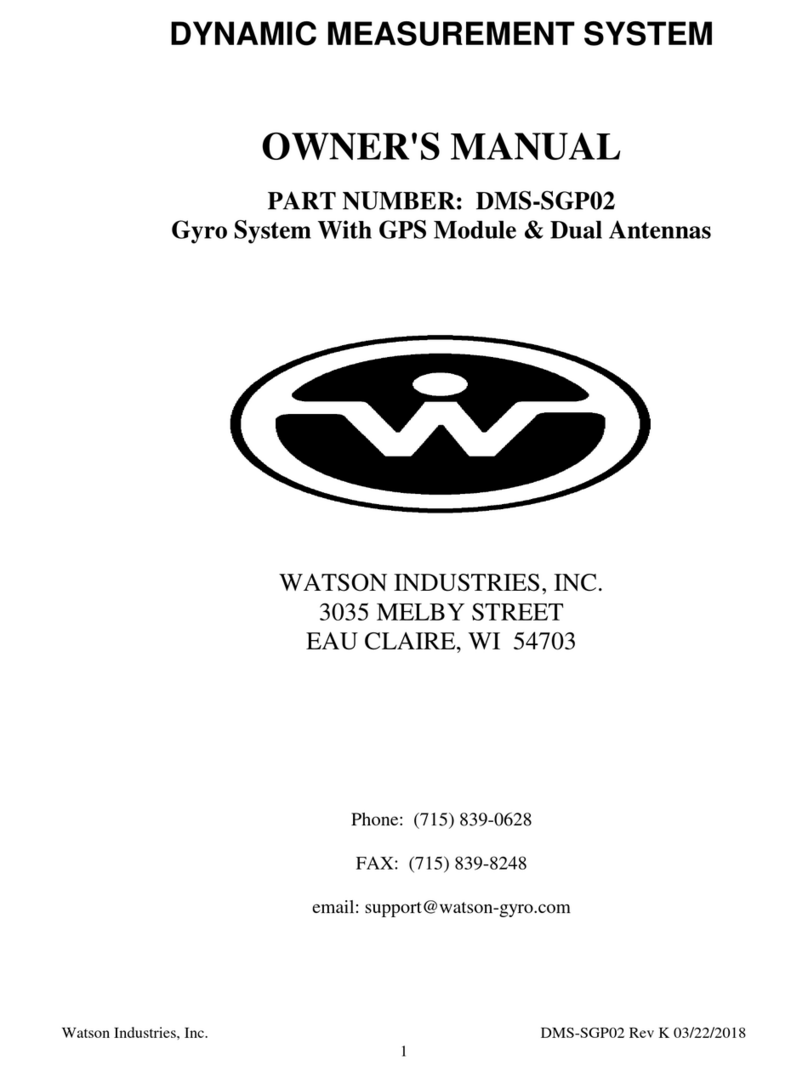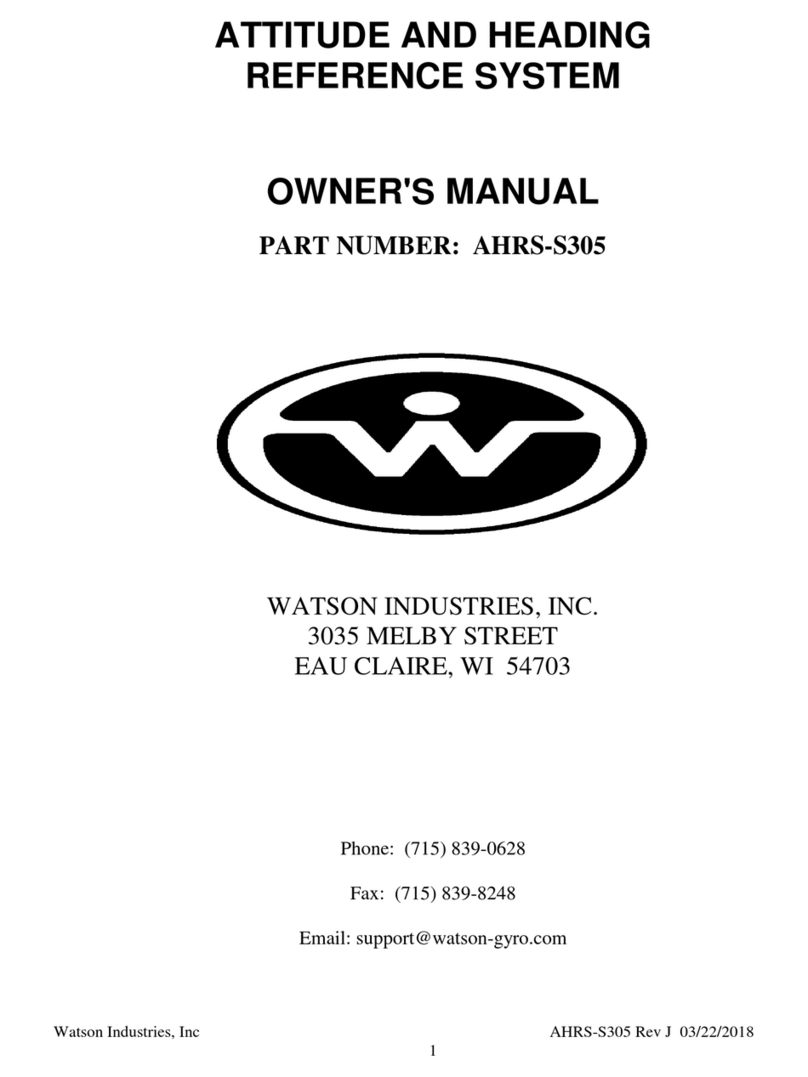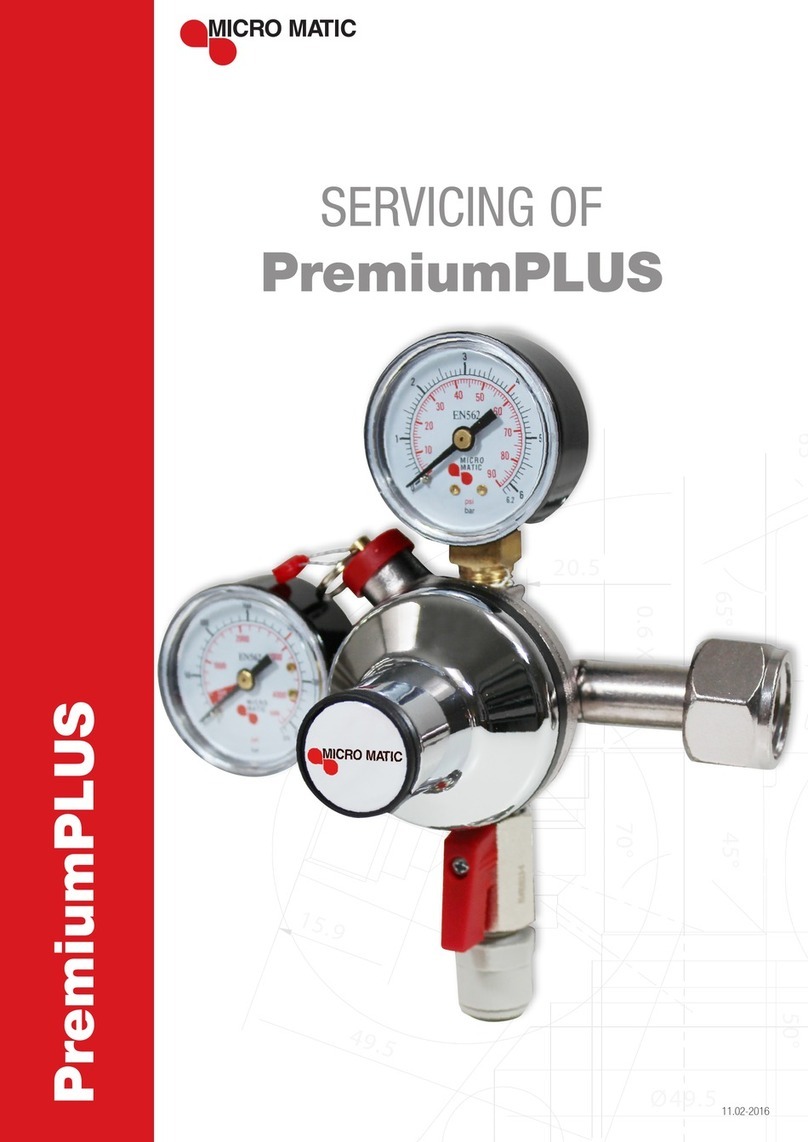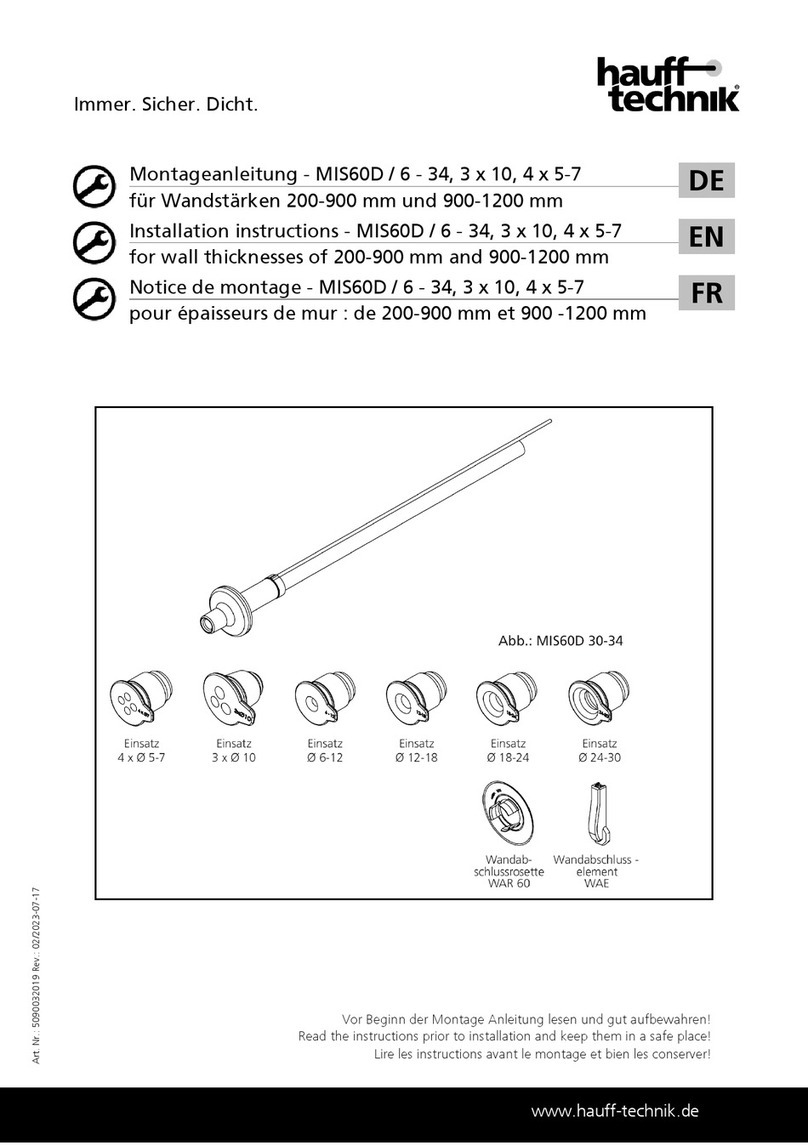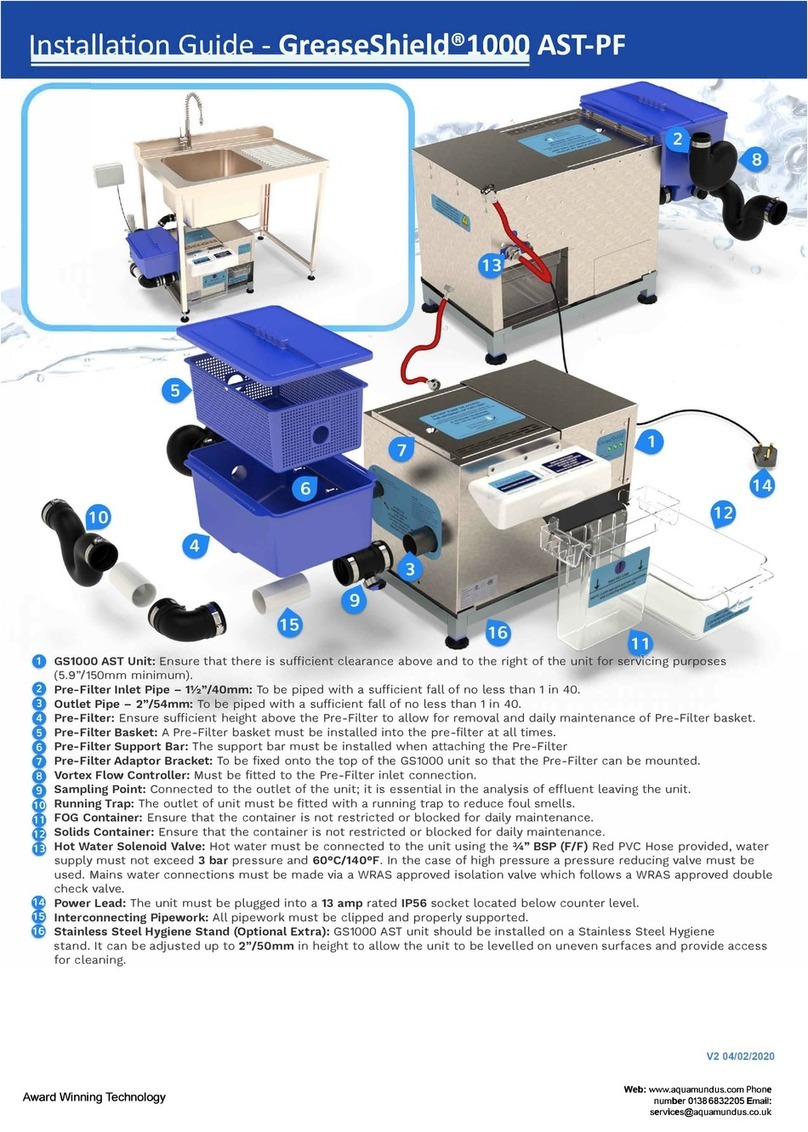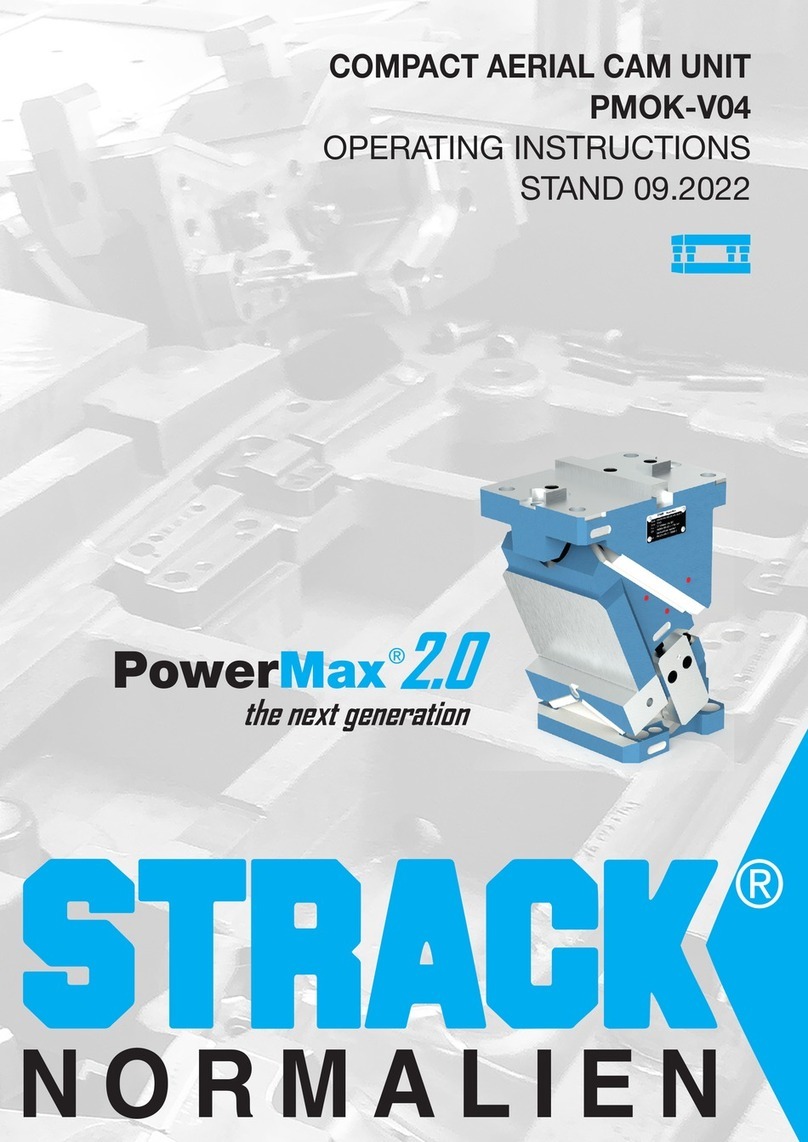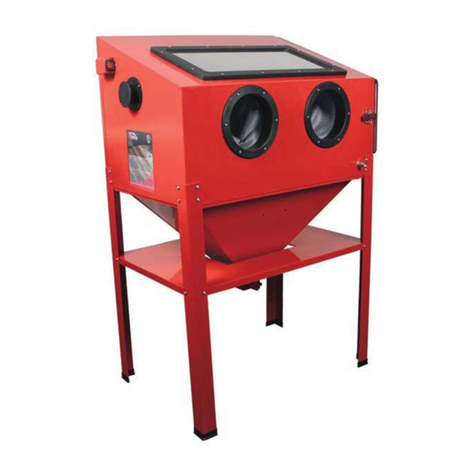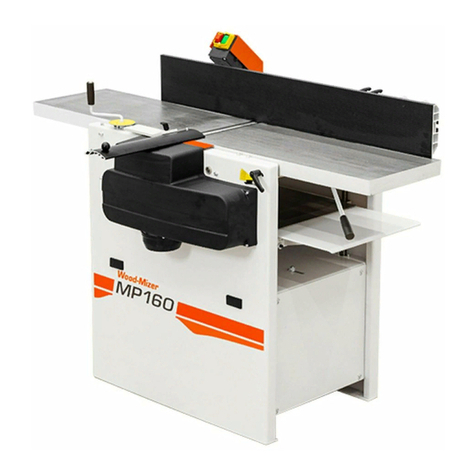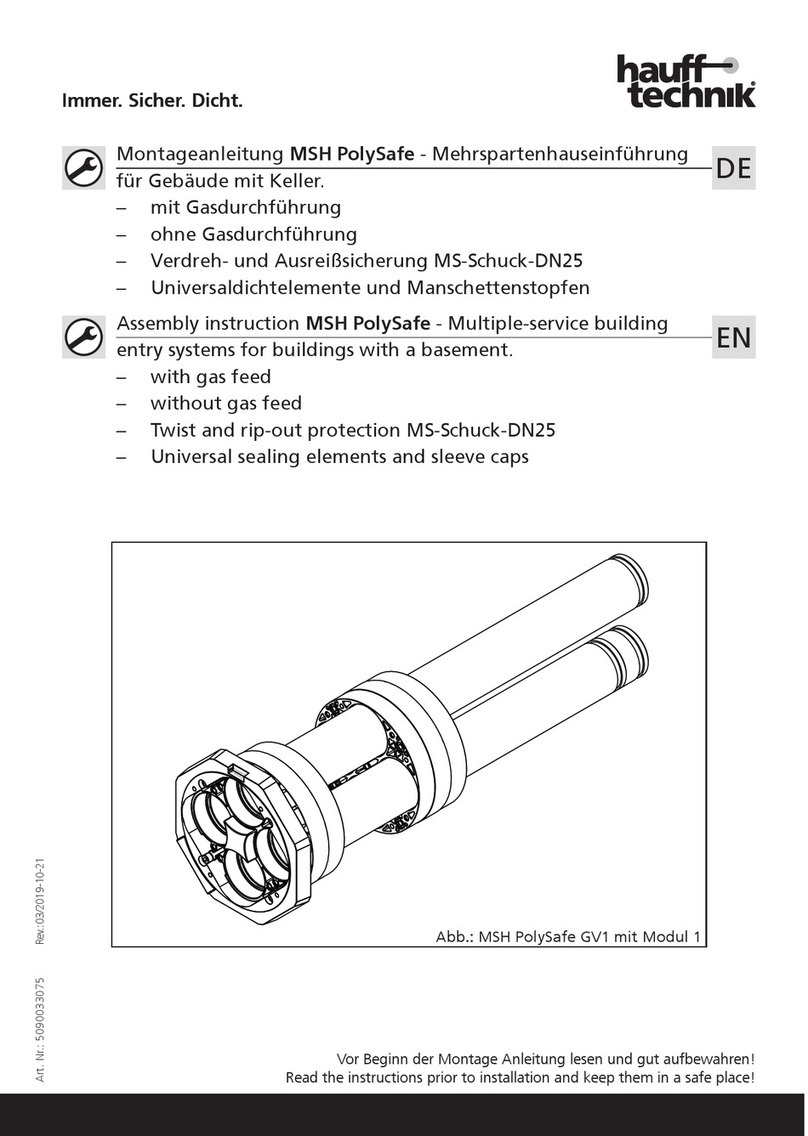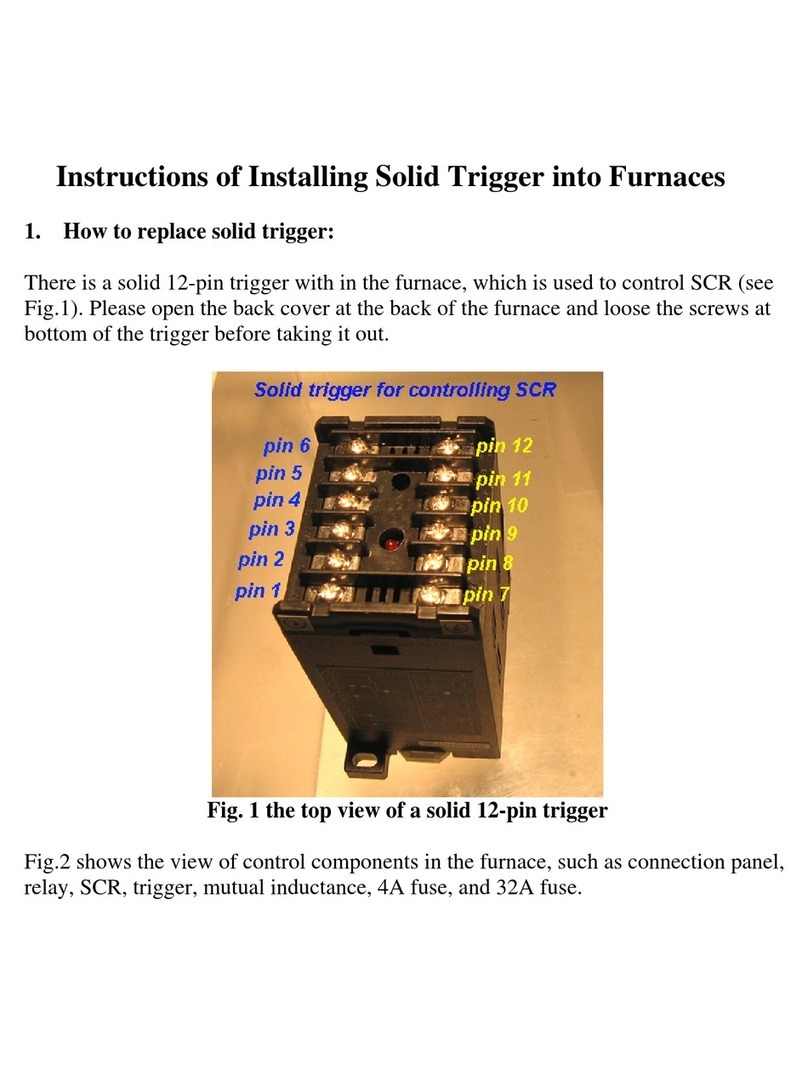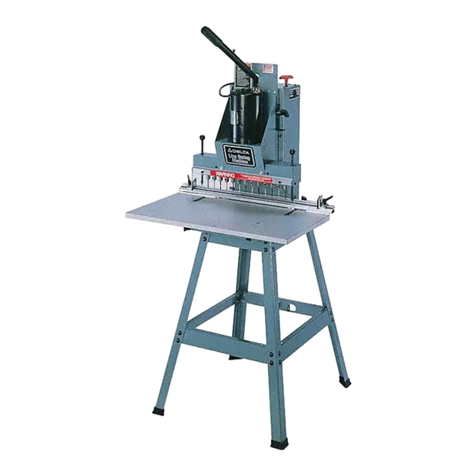WATSON INDUSTRIES AHRS-E304 User manual

AHRS-E304 Watson Industries, Inc 09/06/05
1
ATTITUDE AND HEADING REFERENCE
SYSTEM
OWNER'S MANUAL
PART NUMBER: AHRS-E304
WATSON INDUSTRIES, INC.
3041 MELBY ROAD
EAU CLAIRE, WI 54703
Phone: (715) 839-0628
FAX: (715) 839-8248
email: support@watson-gyro.com

AHRS-E304 Watson Industries, Inc 09/06/05
2
TABLE OF CONTENTS
INTRODUCTION.........................................................................................................................................................3
PRODUCT DESCRIPTION..........................................................................................................................................3
OPERATION ................................................................................................................................................................3
INSTALLATION..........................................................................................................................................................3
Orientation:................................................................................................................................................................3
Mounting: ..................................................................................................................................................................3
Environment:.............................................................................................................................................................4
Power:........................................................................................................................................................................4
ERROR CORRECTION ...............................................................................................................................................4
Centrifugal Force Compensation:..............................................................................................................................4
Delta Velocity Compensation:...................................................................................................................................4
SPECIFICATIONS .......................................................................................................................................................5
RS-232 OUTPUT FORMAT.........................................................................................................................................6
ANALOG OUTPUTS ...................................................................................................................................................8
OUTPUT FLAGS..........................................................................................................................................................8
RS-232 INPUT COMMANDS......................................................................................................................................8
ANALOG INPUTS .......................................................................................................................................................9
INPUT LOGIC COMMANDS....................................................................................................................................10
CONNECTIONS.........................................................................................................................................................11
WARNING..................................................................................................................................................................12
Appendix A .................................................................................................................................................................15
Appendix B..................................................................................................................................................................16
DETERMINING & SETTING OUTPUT CHANNELS.........................................................................................16
ADJUST TIME CONSTANTS...............................................................................................................................17
SETTING OUTPUT FORMAT ..............................................................................................................................17
Appendix C..................................................................................................................................................................17

AHRS-E304 Watson Industries, Inc 09/06/05
3
INTRODUCTION
This manual is intended to help in understanding the installation and operation requirements of
the Watson Attitude and Heading Reference System.
PRODUCT DESCRIPTION
Aircraft attitude and heading gyros need frequent correction to compensate for the 15º per hour
of earth rotation. Watson Industries has produced a solid state gyro system, which models these
functions for an attitude gyro and a slaved heading gyro. This system uses a microprocessor to
integrate angular rate sensor data and provides a closed loop system of error correction to adjust
biases from earth rotation and from instrument offsets. Interface to the microprocessor is done
through a 16-bit A/D and a 12-bit D/A converter. The solid state vibrating structure angular rate
gyros used in this system provide extremely high reliability, low power consumption, shock
resistance and low cost.
OPERATION
The angular rate sensor signals are coordinate transformed and then integrated to produce
attitude and heading outputs that reflect normal aircraft attitude coordinates. These attitude and
heading signals are compared against three accelerometers and a triaxial fluxgate magnetometer
to derive short-term absolute errors. These errors are filtered over a long time constant and are
used to adjust biases in the system so that the long-term convergence of the system is to the
vertical references and the magnetic heading. Compensations for centrifugal forces and velocity
changes on the accelerometers are used to improve overall stability and accuracy.
INSTALLATION
Orientation:
This device utilizes an earth's magnetic field orientation sensor, so orientation is important. The
base plate of the AHRS is intended to be mounted on top of a horizontal surface with the
connector toward the forward direction of the vehicle.
Mounting:
A mounting plate is provided for a flat surface mount. Use non-magnetic hardware. Ideally, the
unit should be installed at least 4 feet away from all significant magnetic materials. Some highly
magnetic materials require even greater separation from the AHRS unit. The unit may be
adhesively mounted at any of its surfaces. If high shock loads are expected (greater than 20G or
repeated shocks greater than 10G), the appropriate shock mounting should be used to prevent
damage. Vibration isolation should be used for use in 4G or greater vibration environments.

AHRS-E304 Watson Industries, Inc 09/06/05
4
Symmetry is very important in such mount designs (consult Watson Industries for application
notes on this if needed).
Environment:
High level AC magnetic fields, such as from large transformers, motors, or soldering guns, are to
be avoided as being potentially damaging to the circuitry, even if the system is not powered.
Exposure to high DC magnetic fields are to be avoided since this can produce a lingering self-
magnetization of the sensor, which can cause distortion of the heading reference.
Power:
This unit has an internal regulator to allow operation over a wide voltage input range. Best
operation is obtained at either 12 or 24 VDC level, although operation is fully satisfactory down
to 10 VDC and up to 30 VDC. Power draw of the unit is about 4 Watts. Internal capacitors are
provided to remove a reasonable level of power line noise, however, capacitors should be added
for long power line wiring or if noise is induced from other loads on the circuit.
ERROR CORRECTION
The correction systems, which all aircraft attitude systems use, unfortunately also allow errors
from the forces on a maneuvering aircraft to enter the system. To control these effects, a balance
of time constant and error limits are used:
Limiting Factor Causing Error Reduction:
Axis of Bank Elevation Heading Centrifugal Acceleration
Error Limit Angle Error Angle Error Angle Error Force Offset Force Offset
Bank ±10º None None ±5 g None
Elevation None ±10º None None ±5 g
Heading None None ±20º None None
It would not be a problem to cross over into these limits since the rate of deterioration from the
original reference should be about 0.03 degrees per second. However, prolonged strong
maneuvers should be avoided if accuracy is to be minimized. In normal attitudes, error is
corrected with a 30-second time constant.
While this AHRS is "all attitude", the accuracy deteriorates rapidly within about 5 degrees of
straight up or straight down.
Centrifugal Force Compensation:
The compensation for centrifugal force is based on calculating the horizontal turn rate and
multiplying it by the forward velocity. The result is subtracted from the vertical reference
accelerometers for the roll axis. This system directly depends on the quality of the velocity
signal.
Delta Velocity Compensation:
The compensation for forward acceleration is based on calculating the changes in average
forward velocity. The result is subtracted from the vertical reference accelerometers for the pitch
axis. This is limited in unusual attitudes and the error correction system is locked out when the

AHRS-E304 Watson Industries, Inc 09/06/05
5
attitude and conditions are outside of a reasonable range. This system also directly depends on
the quality of the velocity signal.
SPECIFICATIONS
1) Output range and scale factor
- Pitch Rate ±100º/s (10º/s/V) (Positive for Nose Up)
- Roll Rate ±100º/s (10º/s/V) (Positive for Roll to Right)
- Yaw Rate ±100º/s (10º/s/V) (Positive for Right Turn)
- Heading Rate ±100º/s (10º/s/V) (Positive for Right Turn)
- Bank ±180º (18º/V) (Positive for Bank to Right)
- Elevation ±90º (18º/V) (Positive for Nose Up)
- South Heading 0-360º (18º/V)
(North = ±10V; East = -5V; South = 0V; West = +5V)
- North Heading 0-360º (18º/V)
(South = ±10V; West = -5V;North= 0V; East = +5V)
2) Rate Accuracy Static ±0.2º/sec; Dynamic ±2%
3) Attitude Accuracy* Static ±0.5º; Dynamic ±2%
4) Heading Accuracy* Static ±1º; Dynamic ±2%
5) Velocity Input -800 to +800 Km/hr. (-10 to +10 Volts) Forward Velocity
6) Temperature
- Operating -30º to +60º C
- Storage -40º to +85º C
7) Weight 32 Ounces
8) Power about 350 milliamps at 12 Volts DC (200 milliamps at 24 VDC)
9) Error correction time constant is about 15 seconds
(error correction is reduced or switched off during extreme maneuvers)
10) Error growth when error correction is switched off will be about 0.03º/second
11) No attitude limits
(however, errors are likely to grow rapidly within 5º of vertical in elevation)
*Assumes accurate velocity data

AHRS-E304 Watson Industries, Inc 09/06/05
6
RS-232 OUTPUT FORMAT
The nominal RS-232 output consists of a string of decimal ASCII characters sent asynchronously
at regular intervals at about 11.85 strings per second. The string is sent at 9600 baud with eight
data bits, one stop bit and no parity. The contents of the string are formed as follows:
1. A single letter and a space used to indicate the start of the data string. the letter “I”
indicates the start of an inertial data string. The letter “R” indicates the start of a
reference data string. If the letter is in lower case (“i” or “r”), an error overrange
condition is indicated (see below).
2. A seven character string representing the bank angle starting with a “+” or a “-“,
followed by three digits, a decimal point, one digit and a space for up to ±179.9 degrees.
3. A six character string representing the elevation angle starting with a “+” or a “-“,
followed by two digits, a decimal point, one digit and a space for up to ±89.9 degrees.
4. A six character string representing the heading angle by three digits, a decimal point, one
digit and a space for zero to 359.9 degrees.
5. A six character string representing the X axis accelerometer starting with a space, then a
“+” or a “-“, followed by one digit, a decimal point and two digits for up to ±9.99 g.
6. A six character string representing the Y axis accelerometer starting with a space, then a
“+” or a “-“, followed by one digit, a decimal point and two digits for up to ±9.99 g.
7. A six character string representing the Z axis accelerometer starting with a space, then a
“+” or a “-“, followed by one digit, a decimal point and two digits for up to ±9.99 g.
8. A six character string representing the X axis angular rate starting with a “+” or a “-“,
followed by two digits, a decimal point, one digit and a space for up to ±99.9
degrees/second.
9. A six character string representing the Y axis angular rate starting with a “+” or a “-“,
followed by two digits,
a decimal point, one digit and a space for up to ±99.9
degrees/second.
10. A six character string representing the Z axis angular rate starting with a “+” or a “-“,
followed by two digits, a decimal point, one digit and a space for up to ±99.9
degrees/second.
11. A six character string representing the velocity starting with a “+” or a “-“, followed by
three digits, a decimal point and one digit for up to ±799.9 Km/hr.
12. The string is terminated by a carriage return. There will then be a short interval with no
data transmission before the next string begins.

AHRS-E304 Watson Industries, Inc 09/06/05
7
Example:
I
+002.5 -05.0 273.4 +1.02
+0.15
-1.57 -00.4 +01.2
+10.4
+001.4 <CR>
^ ^ ^ ^ ^ ^ ^ ^ ^ ^ ^
(1)
bank angle
(2)
elev.
angle
(3)
Head.
angle
(4)
X axis
accel
(5)
Y axis
accel
(6)
Z axis
accel
(7)
X axis
rate
(8)
Y axis
rate
(9)
Z axis
rate
(10)
Velocity
(11)
(12)
space space space space space space space space space space space
This may be reduced to attitude and heading information to improve the update rate to almost
twice the previous rate by using special commands to modify the EEPROM of the unit.
The system is protected from inadvertent write-over of the EEPROM by requiring two spacebar
commands during the initialization interval to access the EEPROM or related functions.
The baud rate may be changed from the nominal value of 9600 baud by modifying the default
value in the EEPROM of the unit to 4800, 2400, or 1200 baud.
A text header is sent by the AHRS during initializations that identifies the unit by part number
and by serial number and gives the date of last calibration. Additionally, a line of text characters
that identifies the data channel columns is sent if the serial output is set to ASCII decimal. This
whole message can be temporarily or permanently suppressed or restored by a “*” command
from the interfacing computer.
Data transmission sent by the AHRS can also be suppressed or restored by a “+” command from
the interfacing computer.
The error overrange condition is indicated by the use of a lower case “i” or “r” when the
calculated attitude or heading error exceeds the ranges listed above. Internal functions which
require these error values are disabled while the condition exists. The system will continue to
operate in an extended time constant mode with a low level of error accumulation until the
condition is cleared. Occasional blips of this condition are expected with no detectable affect on
the resulting data.
The other output format available is a binary format. The binary format provides generally the
same information as the decimal ASCII format, but in a compact binary file format. In this
format, there are nominally 13 words sent that represent 6 fourteen-bit output channels followed
by a carriage return. Again, this may be reduced to attitude and heading information to improve
the update rate (in this case the rate would be 71.11 Hz) by using special commands to modify
the EEPROM of the unit. This format is for highly experienced users only. Consult the factory
for further details.

AHRS-E304 Watson Industries, Inc 09/06/05
8
ANALOG OUTPUTS
The analog outputs are operational amplifier driven so they are limited in drive capacity. Each
analog output has a 300 ohm resistor in series internal to the AHRS to eliminate oscillations from
high capacitance loads. The analog output voltage range is ±10VDC.
OUTPUT FLAGS
There are two output flags. The South Heading flag indicates that the heading is greater than 90°
and less than 270°. The Velocity Error flag indicates acceleration or centrifugal force
corrections exceed 45° or the velocity input is over-range (greater than 800 Km/hr. or less than -
800 Km/hr.).
RS-232 INPUT COMMANDS
The RS-232 input commands are provided for the purpose of unit test and installation set-up.
The same parameters are used as for the output (9600 baud ASCII nominal, or as reset in the
units EEPROM). There are eight commands intended for use by the user (others are used at the
factory for alignment and calibration).
1. An “R” or “r” will set the outputs (analog and serial) to their Reference Command
modes. This will also disable the logic input Reference Command, Coast Mode
Command and Invalid Velocity Command until the next time the unit is powered up.
This mode is used in installation to physically align the unit. Double spacebar at
initialization is required for access to this command.
2. An “I” or “i” will clear the Reference Command mode if it had been set by the serial
input. This is the default mode at power up and is the normal operating mode. This will
also disable the logic input Reference Command, Coast Mode Command and Invalid
Velocity Command until the next time the unit is powered up. Double spacebar at
initialization is required for access to this command.
3. An “F” will disconnect the references from the attitude system and is the Coast Mode
Command. This coast mode is used to make the system ignore the references during high
maneuvers and brief disturbances. This mode is not intended for use except in brief
intervals, since errors will grow geometrically. This will also disable the logic input
Reference Command, Coast Mode Command and Invalid Velocity Command until the
next time the unit is powered up. Double spacebar at initialization is required for access
to this command.
4. A “K” will clear the Coast Mode Command. Double spacebar at initialization is required
for access to this command.
5. A “V” will disconnect the velocity input from the attitude system and is the Invalid
Velocity Command. This mode is used to protect the system from accumulating errors
when the velocity reference is not functioning. This will also disable the logic input
Reference Command, Coast Mode Command and Invalid Velocity Command until the
next time the unit is powered up. Double spacebar at initialization is required for access
to this command.

AHRS-E304 Watson Industries, Inc 09/06/05
9
6. A “C” will clear the Invalid Velocity Command. Double spacebar at initialization is
required for access to this command.
7. An “!” will reinitialize the unit. Further, the access to initialization is inhibited such that
a spacebar command must be sent within 2.5 seconds of the “!” command for
initialization to be engaged.
8. An “L” in the decimal mode will return a line of characters which will identify the data
columns. Double spacebar at initialization is required for access to this command.
There are two output format serial commands: “_” for decimal output and “^” for binary. There
are several interface commands as well: “:” will toggle the output to send a frame of data upon
receiving any non command character and “+” will toggle the output for no output data. These
and other changes are made non-volatile in the unit on EEPROM by keying in the quote (“)
character. Double spacebar at initialization is required for access to these commands.
To provide a calibration means, a command may be used to offset the heading output from any
given angle to North. To use this, simply aim the vehicle platform to the North reference
required, set an “R” command on the keyboard and then send an upper case “N”. This is a
nonvolatile correction, can be used with any North reference, will correct most local magnetic
distortions. Double spacebar at initialization required for access to this command.
The “&” command calls a menu which allows any of several parameters to be set. These are
system time constants, selection of data channels for serial output and baud rate. Double
spacebar at initialization is required for access to this command.
The commands “~”, “@”, “#”, “$”, “(“, “)”, “{“, “}”, “|”, “<”, “>”, “S”, “M”, “X”, “T”, “D”, and
“?” are used by the Watson factory to calibrate the unit and should be used only with the
assistance of the factory. If an undesired function is called, a “Q”, and sometimes Escape or a
Delete will interrupt the command and return to operation with the least disturbance to the
system. All other unspecified characters such as carriage return, line feed and space are ignored
by the system.
If there are problems with the system “hanging up” during the binary output mode, check for
crosstalk between the serial transmit and receive line in your installation. In addition, check to
see that the communications program used is not sending an echo. This will not happen in the
decimal mode because command characters recognized by the system are not produced in this
mode.
ANALOG INPUTS
In an effort to make this system more versatile, this system allows the user to input analog data
that can then be added to the serial data output. This allows the system to act as a data
acquisition unit for other vehicle information such as engine RPM, engine temperature, fuel
remaining, altitude/depth or any other important data. The four analog user inputs as well as the
velocity input have one megohm input impedance, 16 bit A/D conversion resolution, ±10 volt
input range and have a bandwidth of DC to 25 Hertz.

AHRS-E304 Watson Industries, Inc 09/06/05
10
INPUT LOGIC COMMANDS
To aid in alignment and testing, the AHRS-E304 is equipped with a Reference Command input.
By grounding this pin (pin 13), the mode of the unit is changed so that the pendulums and
magnetometer generate the output in place of the usual gyro outputs. When not in use the pin is
to be left unconnected. This input is disconnected until the next power-up by activating some of
the RS-232 command set (sending a serial command “I”, “R”, “F” or “V”).
An Invalid Velocity input command is used to turn off velocity related corrections when the
velocity input is untrustworthy. By grounding this pin (pin 12), the mode of the unit is changed
so that the velocity input has no influence. The same effect can be obtained by holding the
velocity input to zero. When not in use the pin is to be left unconnected. This input is
disconnected until the next power-up by activating some of the RS-232 command set.
The Coast Mode Command input, when grounded (pin 25), will disconnect the references from
the attitude system. The main use of this is to isolate the system from errors during highly
dynamic maneuvers. This mode is not intended to be used for time spans greater than a minute
or two because of the growth of errors in the attitude integrals. When this command is released,
the system will return to normal error correction operation. When not in use the pin is to be left
unconnected. This input is disconnected until the next power-up by activating some of the RS-
232 command set.

AHRS-E304 Watson Industries, Inc 09/06/05
11
CONNECTIONS
AHRS-E304
YX
FORWARD
POWER PINOUT
PIN
A
B
C
D
FUNCTION
+12VDC
Power Ground
1
2 RS-232 Input
3 RS-232 Output
4
5
6
7 Signal Ground
8 User Channel 1 Input
9 User Channel 2 Input
10 Velocity Error Flag
11 South Heading Flag
12 Velocity Input Command
13 Reference Output Command
14 Heading North
15 Heading South
16 Bank
17 Elevation
18 Forward Velocity Analog Input
19 User Channel 3 Input
20 Heading Rate
21 Roll Rate
22 User Channel 4 Input
23 Pitch Rate
24 Yaw Rate
25 Coast Mode Command
FUNCTION
SIGNAL PINOUT
PIN
+12 / +24 VDC
Z
X
Y

AHRS-E304 Watson Industries, Inc 09/06/05
12
WARNING
1. Rough handling or dropping of this unit is likely to cause
damage.
2. Over-voltage and/or miswiring of this unit will cause
damage.
3. The non-magnetic connectors supplied with the unit must
be used to preserve heading accuracy. The user must use
non-magnetic hardware to install the unit.
4. This unit should be protected against prolonged exposure to
high humidity and/or salt air environments.

AHRS-E304 Watson Industries, Inc 09/06/05
13
DISCLAIMER
The information contained in this manual is believed to be accurate and reliable; however, it is
the user's responsibility to test and to determine whether a Watson Industries' product is suitable
for a particular use.
Suggestion of uses should not be taken as inducements to infringe upon any patents.
WARRANTY
Watson Industries, Inc. warrants, to the original purchaser, this product to be free from defective
material or workmanship for a period of one full year from the date of purchase. Watson
Industries' liability under this warranty is limited to repairing or replacing, at Watson Industries'
sole discretion, the defective product when returned to the factory, shipping charges prepaid,
within one full year from the date of purchase. The warranty described in this paragraph shall be
in lieu of any other warranty, express or implied, including but not limited to any implied
warranty of merchantability or fitness for a particular purpose.
Excluded from any warranty given by Watson Industries are products that have been subject to
abuse, misuse, damage or accident; that have been connected, installed or adjusted contrary to
the instructions furnished by seller; or that have been repaired by persons not authorized by
Watson Industries.
Watson Industries reserves the right to discontinue models, to change specifications, price or
design of this product at any time without notice and without incurring any obligation
whatsoever.
The purchaser agrees to assume all liabilities for any damages and/or bodily injury which may
result from the use, or misuse, of this product by the purchaser, his employees or agents. The
purchaser further agrees that seller shall not be liable in any way for consequential damages
resulting from the use of this product.
No agent or representative of Watson Industries is authorized to assume, and Watson Industries
will not be bound by any other obligation or representation made in connection with the sale
and/or purchase of this product.

AHRS-E304 Watson Industries, Inc 09/06/05
14
SERVICE
Watson Industries, Inc. has no service outlets. All service is performed at the factory. In order
to insure prompt service, prior to returning a unit for repair please call, write or fax:
Watson Industries, Inc.
3041 Melby Road
Eau Claire, WI 54703
ATTN: Service Department
Telephone: (800) ABC-GYRO or (715) 839-0628
Fax: (715) 839-8248
All sensors returned under warranty will be repaired (or replaced at the sole option of Watson
Industries) at no cost to the customer other than shipping charge from customer to Watson
Industries (plus any export and transportation charges outside the United States).
In the case of units not under warranty, a flat repair fee will be charged. This fee can be
determined by contacting Watson Industries. Modified units or those subjected to extreme abuse
may be returned to the customer unrepaired.

AHRS-E304 Watson Industries, Inc 09/06/05
15
Appendix A
The following outputs are available via the RS-232 serial link. Their full scale ranges are listed for both decimal and
binary format.
Inertial Output Label Full Scale Decimal Full Scale Binary
Time Since Reset
65535 seconds 16383 seconds
Bank BK ±179.9º ±180º
Elevation EL ±89.9º ±180º
Heading HG 359.9º ±180º
X Accelerometer XA ±9.99 g ±10 g
Y Accelerometer YA ±9.99 g ±10 g
Z Accelerometer ZA ±9.99 g ±10 g
X Angular Rate XR ±99.9 º/s ±200 º/s
Y Angular Rate YR ±99.9 º/s ±200 º/s
Z Angular Rate ZR ±99.9 º/s ±200 º/s
Heading Rate HR ±99.9 º/s ±200 º/s
X Magnetometer XM ±999 mGauss ±1000 mGauss
Y Magnetometer YM ±999 mGauss ±1000 mGauss
Z Magnetometer ZM ±999 mGauss ±1000 mGauss
X inclinometer (simulated) XI ±179.9º ±180º
Y Inclinometer (simulated) YI ±89.9º ±180º
User Channel 1 U1 ±9.99 VDC ±10 VDC
User Channel 2 U2 ±9.99 VDC ±10 VDC
User Channel 3 U3 ±9.99 VDC ±10 VDC
User Channel 4 U3 ±9.99 VDC ±10 VDC
Forward Velocity VS ±799.9 Km/hr ±800 Km/hr
Temperature TP -40º to 88ºC -40º to 88ºC (7 bit)
Status Bits ST 1 byte 1 byte
Flag Bits FL 1 byte 1 byte

AHRS-E304 Watson Industries, Inc 09/06/05
16
Appendix B
DETERMINING & SETTING OUTPUT CHANNELS
To determine which channels are present.
Hook the unit up to your computers serial port.
Use hyperterminal program to interface with unit.
Turn on unit .Wait for the startup message to appear on display.
Hit the space bar twice within the first 5 seconds of turn on.
Sometimes it takes a few tries to get the hang of this.
Wait for the data string to start transmitting.
Now the unit will take in the keyboard commands.
To determine which channel present, first type '&'.
This will bring up the menu:
typing in '3' will show which channels are currently active.
To change which channels are output type '&'(this will bring up the menu again)
Now type '2' to set up channels
The following message will appear:
To proceed type 'Y'
Now each channel will come up one at a time
For example:
Type 'Y' to output channel , type 'N' to remove channel
When you get to bottom of list, this message will appear:
To accept channels type 'N', then hit space bar output data to resume.
To make this channel selection the default the next time you power the unit on type in'"' (double quote)
TYPE IN THE NUMBER OF YOUR SELECTION (OR 'Q' TO QUIT):
1 = ADJUST TIME CONSTANTS
2 = SET OUTPUT CHANNELS
3 = LIST CURRENT OUTPUT CHANNEL SELECTION
4 = SET NEW BAUD RATE
TO SET FOR OUTPUT FOR ANY OF THE FOLLOWING DATA ITEMS, PRESS Y
TO AVOID ANY OF THE FOLLOWING DATA ITEMS, PRESS N
TO QUIT AND DISREGARD ANY OTHER DATA, PRESS Q
*** DO YOU WANT TO PROCEED? (Y/N/Q)
DO YOU WANT OUTPUT OF TIME SINCE RESET?
DO YOU WANT OUTPUT OF BANK ANGLE?
Y = GOBACK, N = INSTALL DATA & QUIT, Q = QUIT
DO YOU WANT TO TRY TO SET DATA AGAIN?

AHRS-E304 Watson Industries, Inc 09/06/05
17
ADJUST TIME CONSTANTS
Consult Factory
SETTING OUTPUT FORMAT
There are two output formats.
Decimal output - “_” Command.
Binary output – “^” Command.
To change the output format:
Hook the unit up to your computers serial port.
Use hyperterminal program to interface with unit.
Turn on unit. Wait for the startup message to appear on display.
Hit the space bar twice within the first 5 seconds of turn on.
Sometimes it takes a few tries to get the hang of this.
Wait for the data string to start transmitting.
Now the unit will take in the keyboard commands. Press the key Command corresponding to the
format you want to switch into. (for example type “_” to change into Decimal Format.)
To make this format selection the default the next time you power the unit on type in'"' (double quote.)
Appendix C
76543210 76543210
Data Word
MSB LSB
As the data words are received, the LSB is shifted left to shift out the sign bit. The MSB is then connected to the
LSB as a 16 bit word. This word is then shifted left to shift out the sign bit. What remains is a signed fractional
word with a resolution of 13 bits plus a sign bit.
DATA STREAM
WORD 1 WORD 2 WORD 3 WORD 4 .......... WORD N 0x0D
Carriage
Return
Byte
All of the data words have a high sign bit, but the delimiter byte is an ASCII carriage return character which has a
low sign bit. The nominal interface settings are:
9600 Baud
8 Bit Data
1 Start Bit
1 Stop Bit
No Parity
Table of contents
Other WATSON INDUSTRIES Industrial Equipment manuals
Popular Industrial Equipment manuals by other brands
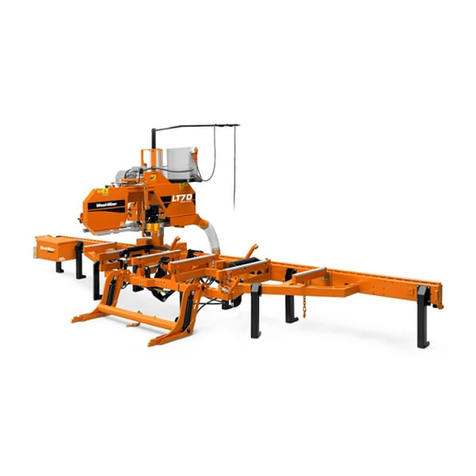
woodmizer
woodmizer LS LT60 Safety, Operation, Maintenance & Parts Manual

Flex-A-Seal
Flex-A-Seal 63 Installation, operation, maintenance guide
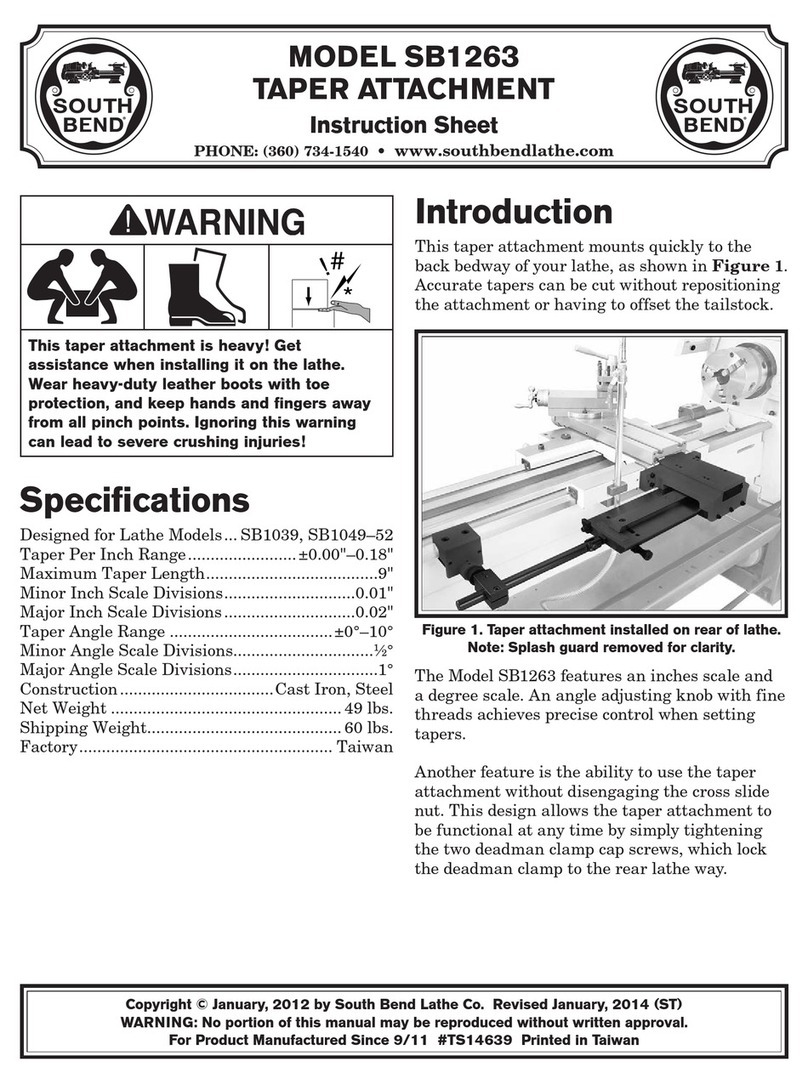
Southbend
Southbend SB1263 instruction sheet
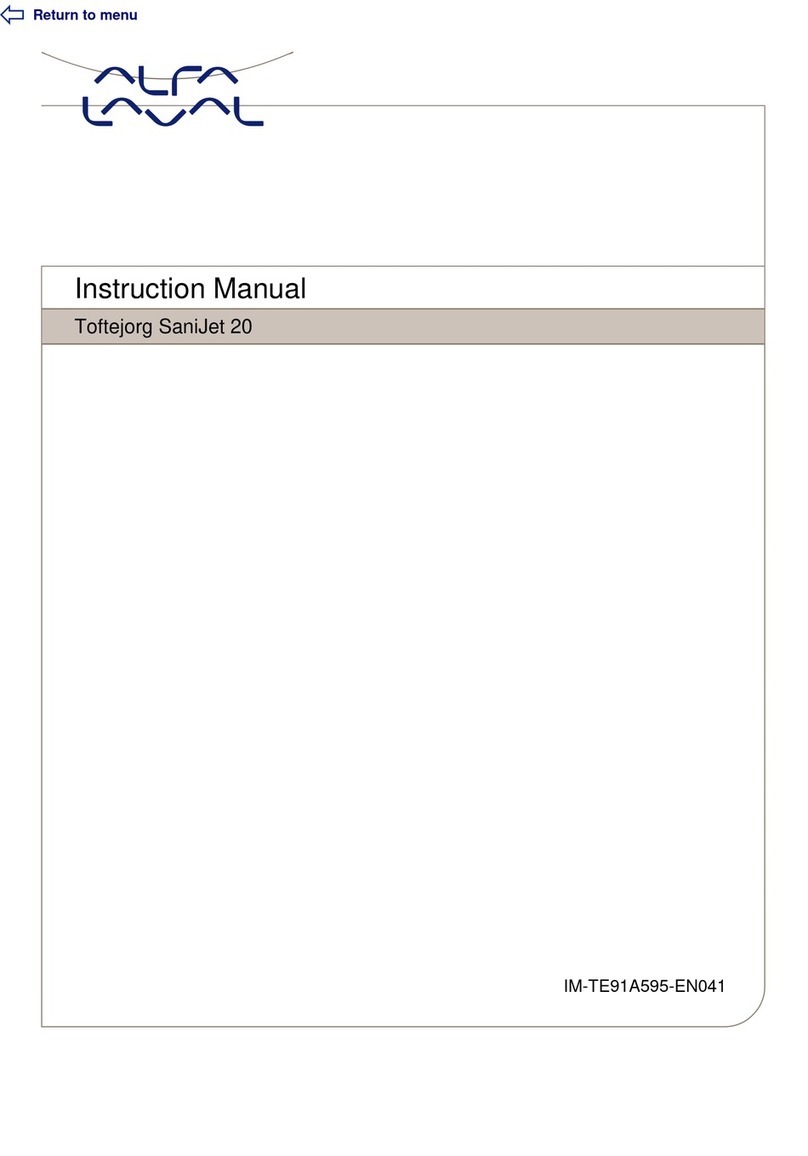
Alfalaval
Alfalaval Toftejorg SaniJet 20 instruction manual
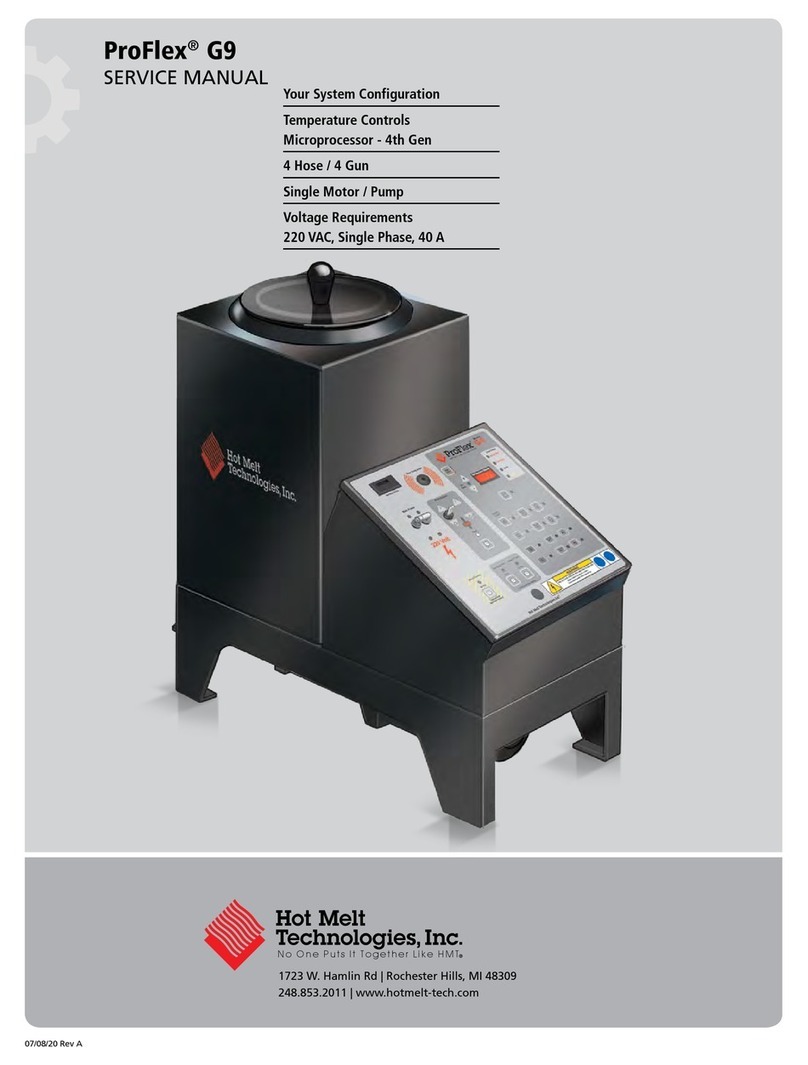
Proflex
Proflex G9 Service manual
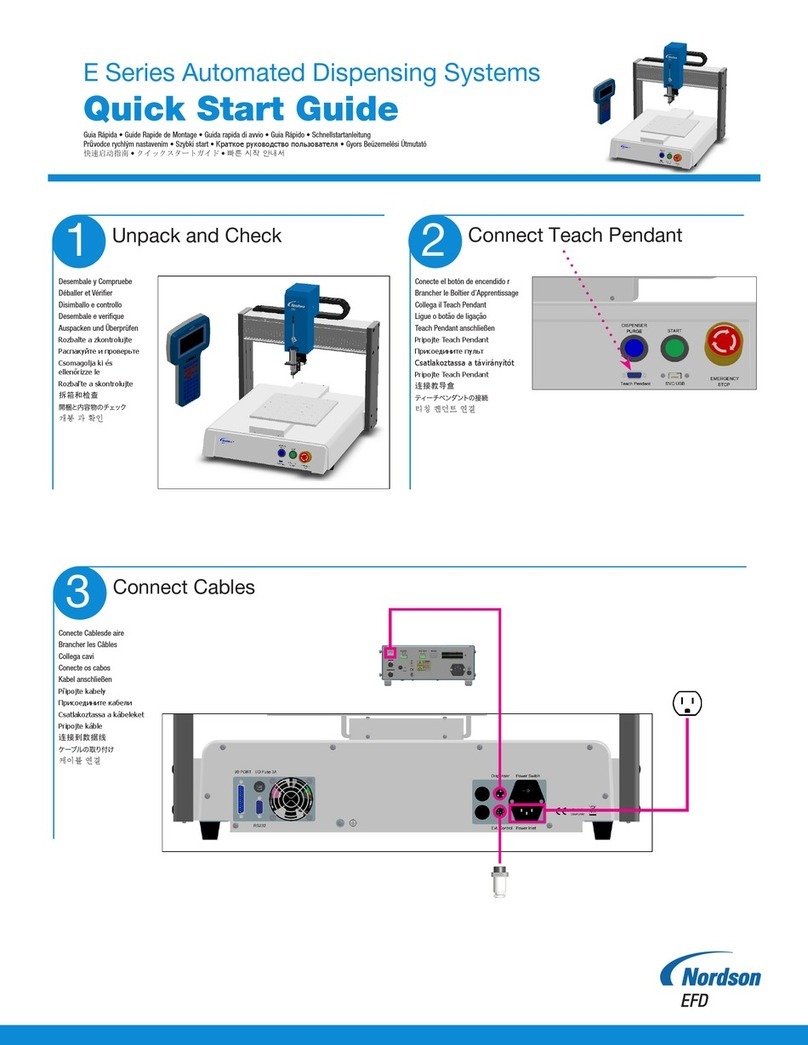
Nordson EFD
Nordson EFD E series quick start guide
